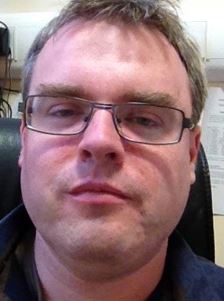 This post is reproduced from the blog Dundee Physics with the kind permission of the author.
This post is reproduced from the blog Dundee Physics with the kind permission of the author.
When my department was hiring for a life sciences-related position this past fall, I was on a search and selection committee for the first time. It’s an interesting and tough process, so I thought I’d share some thoughts on how we went about assessing our applicants in the hope that other job seekers can benefit from my insight. We cast a wide net and ended up with a large number of very high quality candidates. It was a tough choice–so how did we decide?
Fit to specification: My first piece of advice is to make sure that your cover letter, CV and research statement clearly communicate how you fit the specific position advertised. While our call wasn’t restricted to those working in a certain topic area, applicants still needed to state how their work aligned itself to the life sciences. Writing that you were “really interested in biology” wasn’t going to cut it, and for some really strong physical sciences applicants, this is where they fell down. We wanted to see at least some evidence of how the applicant’s work had been applied to biophysics research or how it might be applied in our department (and not just generically).
Experience: Your experience to date matters a lot – it shows the trajectory that you are on, what kind of thinker you are and what you might be capable of. The areas you have worked on, your general productivity and the papers you have produced make a big difference. However, the reality is that this is only part of the package. You might have been unlucky in where you have worked, or the projects you were assigned may not have gone according to plan. We recognize this. When your papers and background are a little lacking, then your research statement becomes even more important.
Research Statement: So you want to come and work with us, but what exactly are you planning to do? Your research statement should outline a coherent program of work and describe an interesting project in an innovative way. Incremental changes are not as persuasive as plans on a larger scale. However, you also have to be realistic, and this is where the challenge lies: to outline something of grand ambition in such a way that we can believe you will be able to deliver. In my mind this is perhaps the most important section: It gives you the opportunity to showcase your talent regardless of what you have achieved.
Metrics: Does your h-index matter? Your publication count? Number of citations? Where you publish? In modern academia, these things are very significant, probably much more than they should be. The wide variety of postdoc positions that people have means you can’t always compare such factors in any meaningful way. One of my colleagues thought that postdocs should produce at least one decent paper per year. We used this as a general standard, but not a hard-and-fast rule. We did consider numbers of citations, but only as one factor to help us get a sense of the value of the papers published. Ultimately, I think the panel paid more attention to where papers were published over other numbers, but we really tried to look at the whole picture rather than just one metric. We put more emphasis on the applicant’s research ideas and his or her potential to deliver than pure numbers.
Interview: You might make a good impression on paper, but you also have to talk the talk. We decided on a full day visit for each interviewee, so the candidates got to speak to a range of people across the university. We asked them to think specifically about which faculty members they might like to converse with, in order to push them to think about why exactly they wanted to work with us. They were also asked to give a talk. All this information gave the interview panel a rounder picture of each applicant.
Ultimately, we hired someone with great potential, who we believe will take on big challenges. We were looking for—and found—a person who is a good colleague, who fits in with the department and who interacts well with undergraduates. I hope you find a similar good fit in whatever position you seek!
David McGloin (d.mcgloin@dundee.ac.uk) is head of the division of physics and a senior lecturer at the University of Dundee, Scotland.
